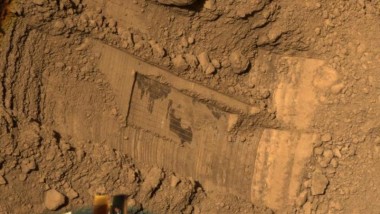An MIT scientist suggests young planets maintain a high temperature for several million years, much longer than previously assumed. This can make such planets easier to detect, because during this hot stage their brightness is not overshadowed by that of ...
IBEX to Go to the Outer Solar System
NASA has recently accomplished the successful launch of the Interstellar Boundary Explorer (IBEX) probe into orbit. The spaceship will be able to collect new data on solar wind. The research can also help scientist understand the way in which solar ...
ESA’s Gravity Mission ‘GOCE’
In September 2008 the European Space Agency plans to launch a satellite called the Gravity Field and Steady-State Ocean Circulation Explorer. The spacecraft will allow scientists to learn more about Earth’s gravity field, expanding our knowledge in several fields of ...
Mars’ soil is like Antarctica’s
NASA’s Phoenix Mars Lander scraped the icy soil of the “Wonderland” area on June 26, confirming that subsurface soil and icy soil can be sampled at a single trench. Now, Phoenix scientists are assured they have a completed the soil-layer ...
Next Extinction Coming Soon?
Scientists from the Cardiff Center for Astrobiology have developed a model showing that our solar system goes through the plane of the galaxy every 35-40 million years. This is accompanied by comets hurtling into the inner solar system, coinciding with ...
New Technologies Generate Energy from Sea Tide
Tidal power has recently been harnessed to generate electricity. Verdant Power and Pelamis Wave Power are two companies which have developed technologies that can take advantage of the oceans’ kinetic energy in order to create electricity. The companies have already ...
Earth in HD
The first high definition image of Earth was recently taken by the Japanese Lunar explorer KAGUYA. The photograph was taken from a distance of 110,000 km– hundreds of times further away from Earth than any spaceship with similar capabilities had ...
Earth-like Planet in Habitable Zone
Astronomers discovered the most Earth-like planet outside our Solar System. The newly discovered planet is only 50% larger than the Earth and scientist have speculated it might be capable of having liquid water. The Swiss, French and Portuguese scientists who ...








